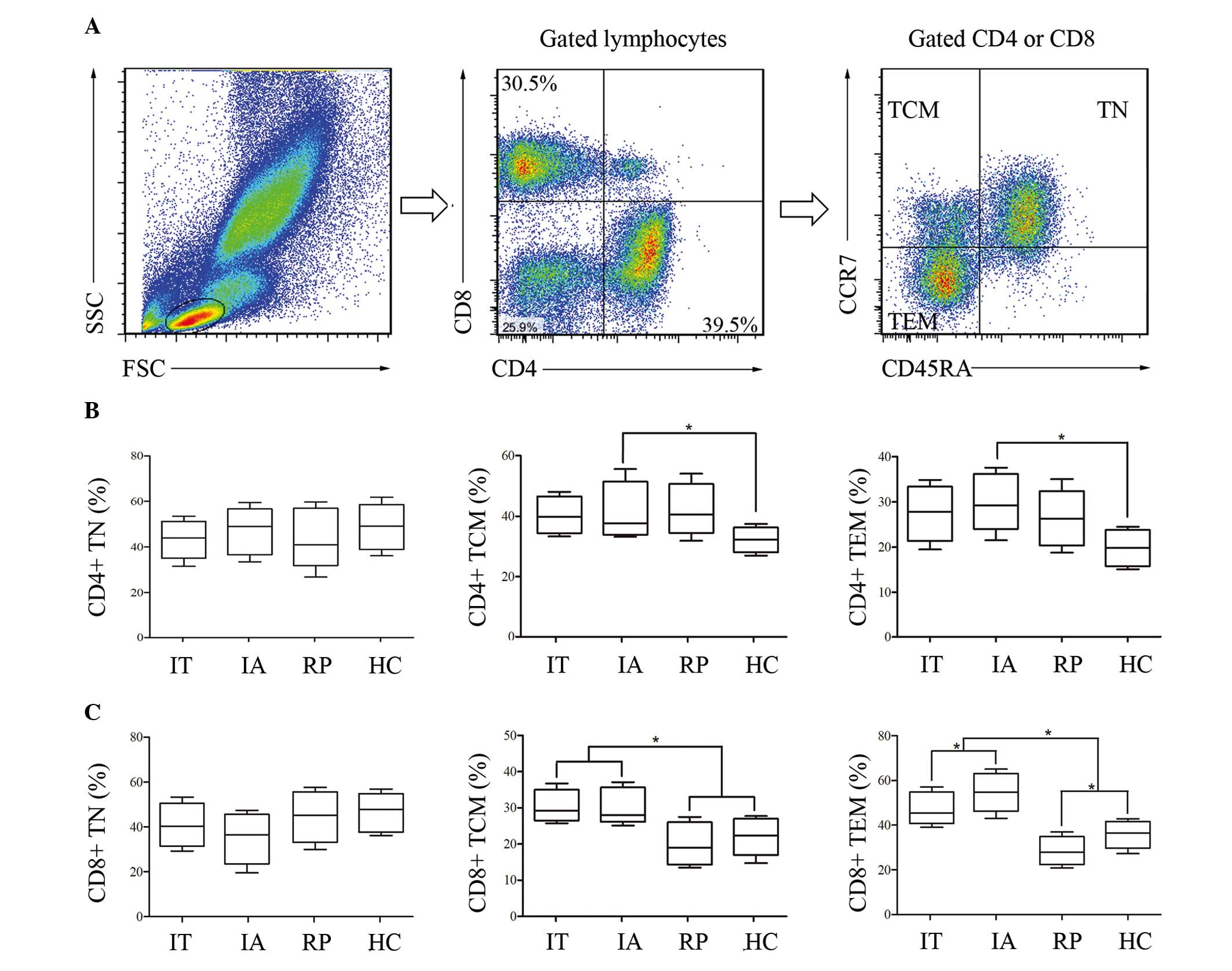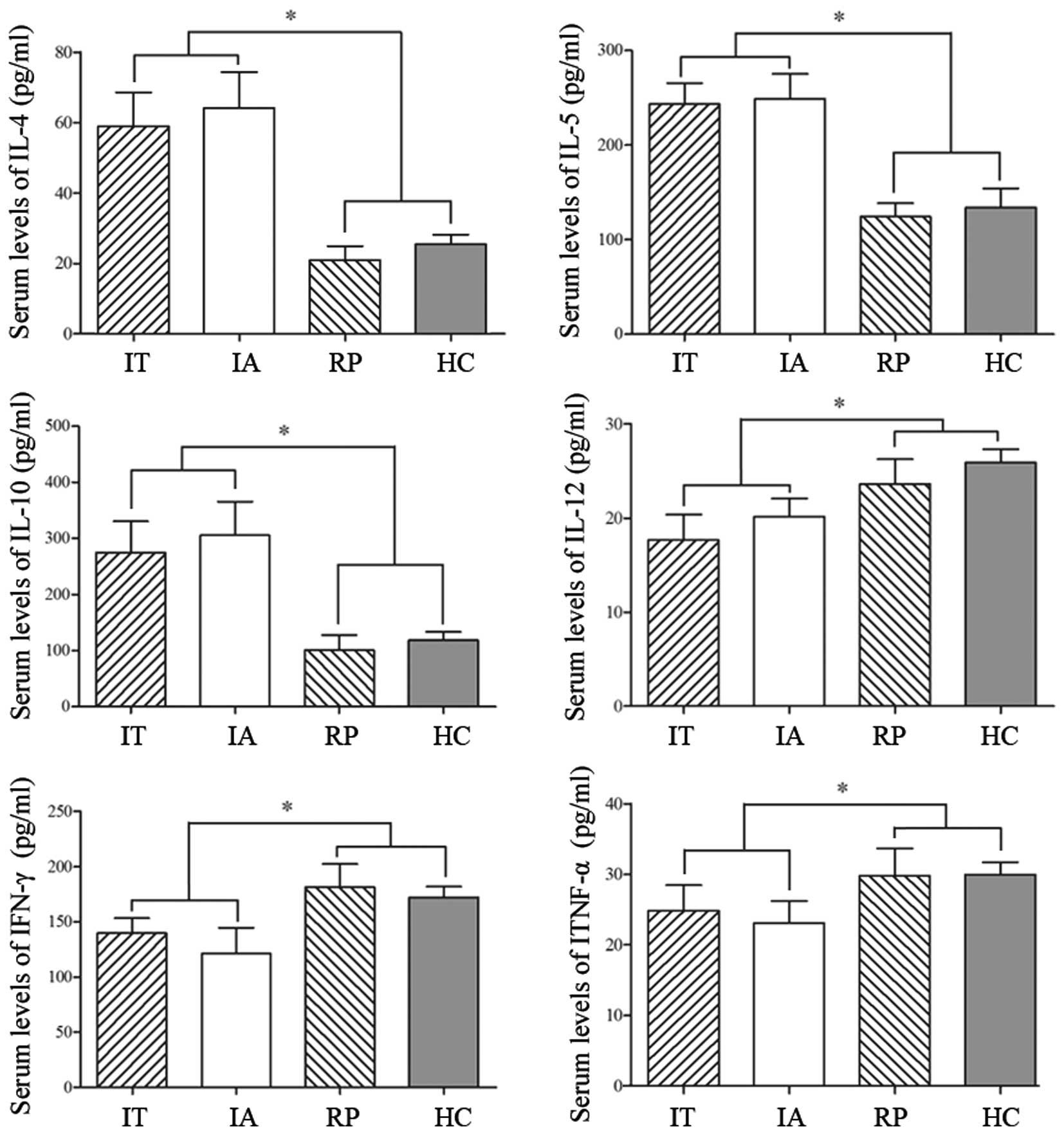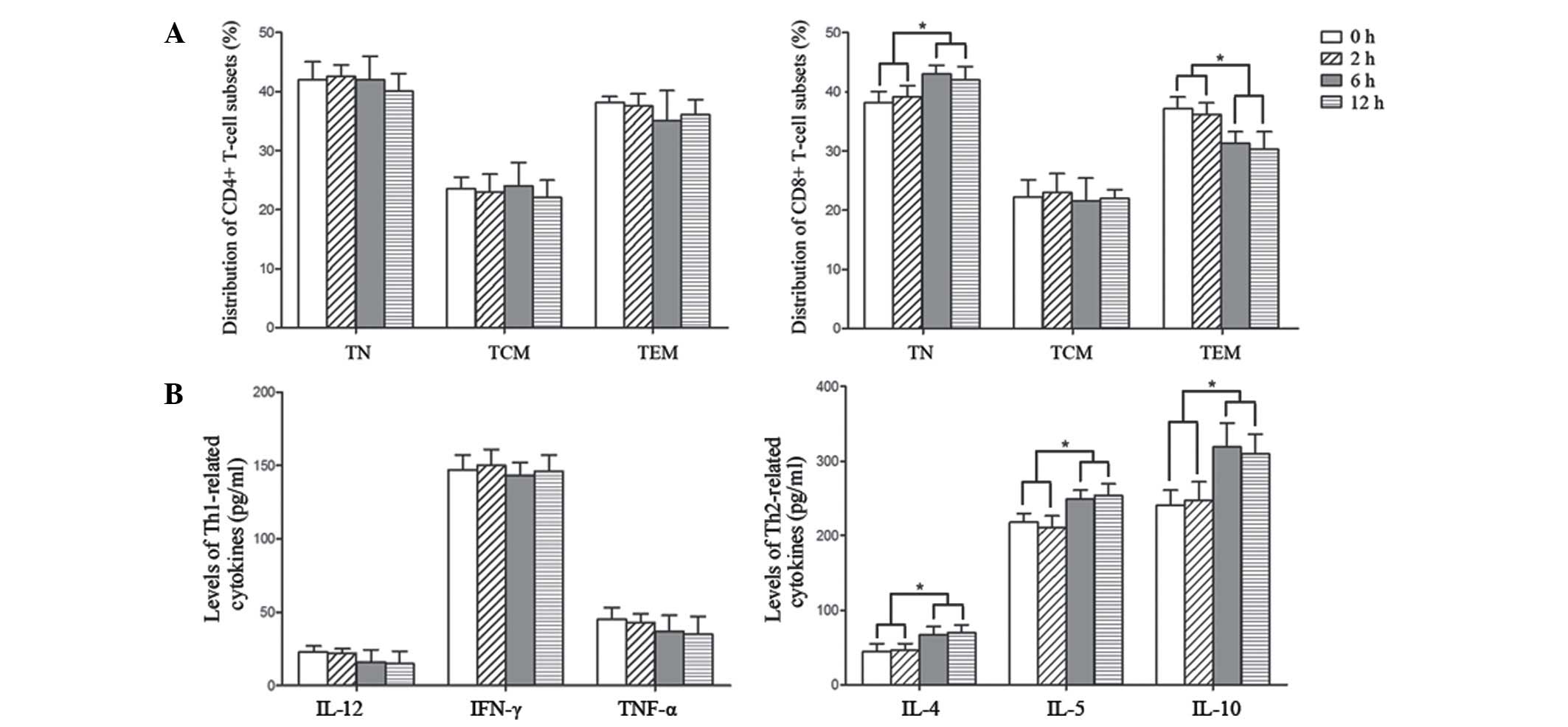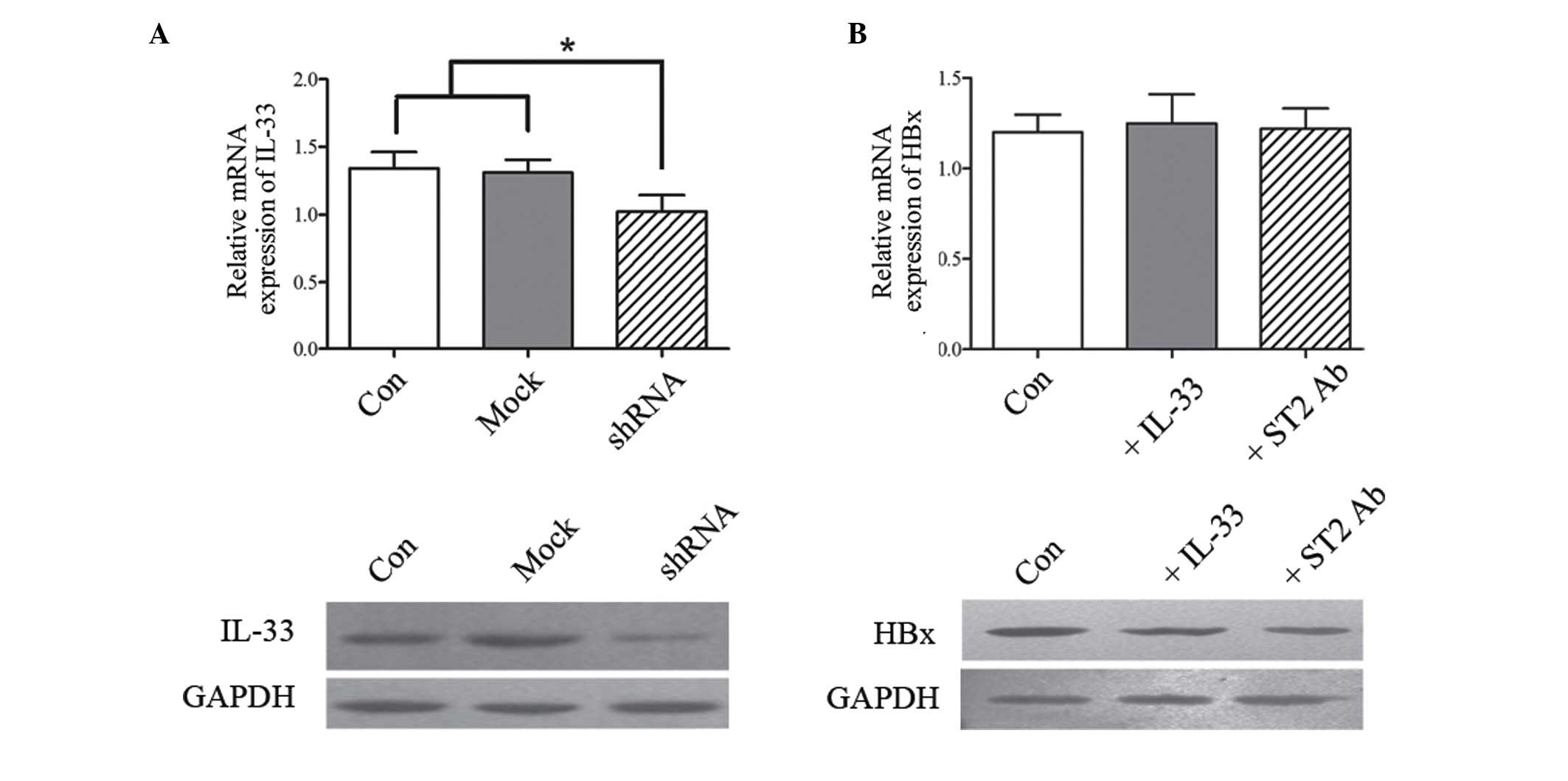|
1
|
Jemal A, Bray F, Center MM, Ferlay J, Ward
E and Forman D: Global cancer statistics. CA Cancer J Clin.
61:69–90. 2011. View Article : Google Scholar : PubMed/NCBI
|
|
2
|
Zender L, Villanueva A, Tovar V, Sia D,
Chiang DY and Llovet JM: Cancer gene discovery in hepatocellular
carcinoma. J Hepatol. 52:921–929. 2010. View Article : Google Scholar : PubMed/NCBI
|
|
3
|
Takayama T, Sekine T, Makuuchi M, Yamasaki
S, Kosuge T, Yamamoto J, Shimada K, Sakamoto M, Hirohashi S, Ohashi
Y and Kakizoe T: Adoptive immunotherapy to lower postsurgical
recurrence rates of hepatocellular carcinoma: A randomised trial.
Lancet. 356:802–807. 2000. View Article : Google Scholar : PubMed/NCBI
|
|
4
|
Singal AG, Nehra M, Adams-Huet B, Yopp AC,
Tiro JA, Marrero JA, Lok AS and Lee WM: Detection of hepatocellular
carcinoma at advanced stages among patients in the HALT-C trial:
Where did surveillance fail? Am J Gastroenterol. 108:425–432. 2013.
View Article : Google Scholar : PubMed/NCBI
|
|
5
|
Bréchot C: Pathogenesis of hepatitis B
virus related hepatocellular carcinoma: Old and new paradigms.
Gastroenterology. 127(5): Suppl 1. S56–S61. 2004. View Article : Google Scholar : PubMed/NCBI
|
|
6
|
Tanaka T, Bai Z, Srinoulprasert Y, Yang
BG, Hayasaka H and Miyasaka M: Chemokines in tumor progression and
metastasis. Cancer Sci. 96:317–322. 2005. View Article : Google Scholar : PubMed/NCBI
|
|
7
|
Jain RK: Normalizing tumor
microenvironment to treat cancer: Bench to bedside to biomarkers. J
Clin Oncol. 31:2205–2218. 2013. View Article : Google Scholar : PubMed/NCBI
|
|
8
|
Moeini A, Cornellà H and Villanueva A:
Emerging signaling pathways in hepatocellular carcinoma. Liver
Cancer. 1:83–93. 2012. View Article : Google Scholar : PubMed/NCBI
|
|
9
|
Zheng S, Tansey WP, Hiebert SW and Zhao Z:
Integrative network analysis identifies key genes and pathways in
the progression of hepatitis C virus induced hepatocellular
carcinoma. BMC Med Genomics. 4:622011. View Article : Google Scholar : PubMed/NCBI
|
|
10
|
Yin Y, Wu C, Song J, Wang J, Zhang E, Liu
H, Yang D, Chen X, Lu M and Xu Y: DNA immunization with fusion of
CTLA-4 to hepatitis B virus (HBV) core protein enhanced Th2 type
responses and cleared HBV with an accelerated kinetic. PLoS One.
6:e225242011. View Article : Google Scholar : PubMed/NCBI
|
|
11
|
Barnaba V, Franco A, Paroli M, Benvenuto
R, De Petrillo G, Burgio VL, Santilio I, Balsano C, Bonavita MS,
Cappelli G, et al: Selective expansion of cytotoxic T lymphocytes
with a CD4+ CD56+ surface phenotype and a T helper type 1 profile
of cytokine secretion in the liver of patients chronically infected
with hepatitis B virus. J Immunol. 152:3074–3087. 1994.PubMed/NCBI
|
|
12
|
Kang EH, Kown TY, Oh GT, Park WF, Park SI,
Park SK and Lee YI: The flavonoid ellagic acid from a medicinal
herb inhibits host immune tolerance induced by the hepatitis B
virus-e antigen. Antiviral Res. 72:100–106. 2006. View Article : Google Scholar : PubMed/NCBI
|
|
13
|
Morrey JD, Motter NE, Chang S and Fairman
J: Breaking B and T cell tolerance using cationic lipid-DNA
complexes (CLDC) as a vaccine adjuvant with hepatitis B virus (HBV)
surface antigen in transgenic mice expressing HBV. Antiviral Res.
90:227–230. 2011. View Article : Google Scholar : PubMed/NCBI
|
|
14
|
Ye B, Liu X, Li X, Kong H, Tian L and Chen
Y: T-cell exhaustion in chronic hepatitis B infection: Current
knowledge and clinical significance. Cell Death Dis. 6:e16942015.
View Article : Google Scholar : PubMed/NCBI
|
|
15
|
Busca A and Kumar A: Innate immune
responses in hepatitis B virus (HBV) infection. Virol J. 11:222014.
View Article : Google Scholar : PubMed/NCBI
|
|
16
|
Kastenmuller W, Gasteiger G, Subramanian
N, Sparwasser T, Busch DH, Belkaid Y, Drexler I and Germain RN:
Regulatory T cells selectively control CD8+ T cell effector pool
size via IL-2 restriction. J Immunol. 187:3186–3197. 2011.
View Article : Google Scholar : PubMed/NCBI
|
|
17
|
Schmitz J, Owyang A, Oldham E, Song Y,
Murphy E, McClanahan TK, Zurawski G, Moshrefi M, Qin J, Li X, et
al: IL-33, an interleukin-1-like cytokine that signals via the IL-1
receptor-related protein ST2 and induces T helper type 2-associated
cytokines. Immunity. 23:479–490. 2005. View Article : Google Scholar : PubMed/NCBI
|
|
18
|
Carriere V, Roussel L, Ortega N, Lacorre
DA, Americh L, Aguilar L, Bouche G and Girard JP: IL-33, the
IL-1-like cytokine ligand for ST2 receptor, is a
chromatin-associated nuclear factor in vivo. Proc Natl Acad Sci
USA. 104:282–287. 2007. View Article : Google Scholar : PubMed/NCBI
|
|
19
|
Roussel L, Erard M, Cayrol C and Girard
JP: Molecular mimicry between IL-33 and KSHV for attachment to
chromatin through the H2A-H2B acidic pocket. EMBO Rep. 9:1006–1012.
2008. View Article : Google Scholar : PubMed/NCBI
|
|
20
|
Vocca L, Di Sano C, Uasuf CG, Sala A,
Riccobono L, Gangemi S, Albano GD, Bonanno A, Gagliardo R and
Profita M: IL-33/ST2 axis controls Th2/IL-31 and Th17 immune
response in allergic airway diseases. Immunobiology. 220:954–963.
2015. View Article : Google Scholar : PubMed/NCBI
|
|
21
|
Blom L and Poulsen LK: IL-1 family members
IL-18 and IL-33 upregulate the inflammatory potential of
differentiated human Th1 and Th2 cultures. J Immunol.
189:4331–4337. 2012. View Article : Google Scholar : PubMed/NCBI
|
|
22
|
Seki K, Sanada S, Kudinova AY, Steinhauser
ML, Handa V, Gannon J and Lee RT: Interleukin-33 prevents apoptosis
and improves survival after experimental myocardial infarction
through ST2 signaling. Circ Heart Fail. 2:684–691. 2009. View Article : Google Scholar : PubMed/NCBI
|
|
23
|
McLaren JE, Michael DR, Salter RC, Ashlin
TG, Calder CJ, Miller AM, Liew FY and Ramji DP: IL-33 reduces
macrophage foam cell formation. J Immunol. 185:1222–1229. 2010.
View Article : Google Scholar : PubMed/NCBI
|
|
24
|
Wood IS, Wang B and Trayhurn P: IL-33, a
recently identified interleukin-1 gene family member, is expressed
in human adipocytes. Biochem Biophys Res Commun. 384:105–109. 2009.
View Article : Google Scholar : PubMed/NCBI
|
|
25
|
Miller AM, Asquith DL, Hueber AJ, Anderson
LA, Holmes WM, McKenzie AN, Xu D, Sattar N, McInnes IB and Liew FY:
Interleukin-33 induces protective effects in adipose tissue
inflammation during obesity in mice. Circ Res. 107:650–658. 2010.
View Article : Google Scholar : PubMed/NCBI
|
|
26
|
Arshad MI, Piquet-Pellorce C,
L'Helgoualc'h A, Rauch M, Patrat-Delon S, Ezan F, Lucas-Clerc C,
Nabti S, Lehuen A, Cubero FJ, et al: TRAIL but not FasL and TNFα,
regulates IL-33 expression in murine hepatocytes during acute
hepatitis. Hepatology. 56:2353–2362. 2012. View Article : Google Scholar : PubMed/NCBI
|
|
27
|
Livak KJ and Schmittgen TD: Analysis of
relative gene expression data using real-time quantitative PCR and
the 2(−Delta Delta C(T)) method. Methods. 25:402–408. 2001.
View Article : Google Scholar : PubMed/NCBI
|
|
28
|
Xu X, Shang Q, Chen X, Nie W, Zou Z, Huang
A, Meng M, Jin L, Xu R, Zhang JY, et al: Reversal of B-cell
hyperactivation and functional impairment is associated with HBsAg
seroconversion in chronic hepatitis B patients. Cell Mol Immunol.
12:309–316. 2015. View Article : Google Scholar : PubMed/NCBI
|
|
29
|
Hojo-Souza NS, Pereira DB, Passos LS,
Gazzinelli-Guimarães PH, Cardoso MS, Tada MS, Zanini GM,
Bartholomeu DC, Fujiwara RT and Bueno LL: Phenotypic profiling of
CD8(+) T cells during Plasmodium vivax blood-stage infection. BMC
Infect Dis. 15:352015. View Article : Google Scholar : PubMed/NCBI
|
|
30
|
Kaech SM, Wherry EJ and Ahmed R: Effector
and memory T-cell differentiation: Implications for vaccine
development. Nat Rev Immunol. 2:251–262. 2002. View Article : Google Scholar : PubMed/NCBI
|
|
31
|
Wang J, Cai Y, Ji H, Feng J, Ayana DA, Niu
J and Jiang Y: Serum IL-33 levels are associated with liver damage
in patients with chronic hepatitis B. J Interferon Cytokine Res.
32:248–253. 2012. View Article : Google Scholar : PubMed/NCBI
|
|
32
|
Zhao PW, Shi X, Li C, Ayana DA, Niu JQ,
Feng JY, Wang J and Jiang YF: IL-33 enhances humoral immunity
against chronic HBV infection through activating CD4(+)CXCR5(+) TFH
cells. J Interferon Cytokine Res. 35:454–463. 2015. View Article : Google Scholar : PubMed/NCBI
|
|
33
|
Neuveut C, Wei Y and Buendia MA:
Mechanisms of HBV-related hepatocarcinogenesis. J Hepatol.
52:594–604. 2010. View Article : Google Scholar : PubMed/NCBI
|
|
34
|
Ng SA and Lee C: Hepatitis B virus X gene
and hepatocarcinogenesis. J Gastroenterol. 46:974–990. 2011.
View Article : Google Scholar : PubMed/NCBI
|













